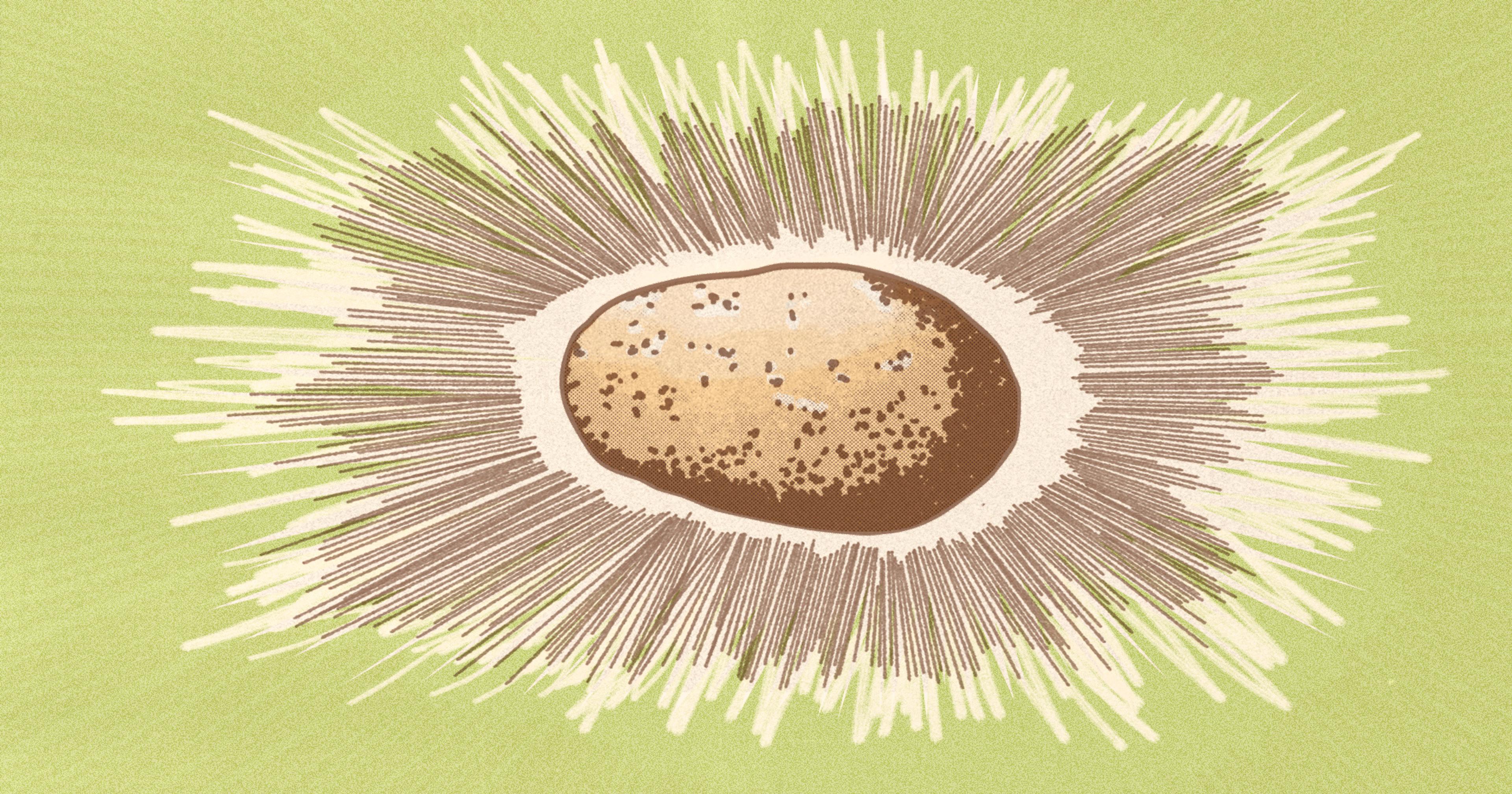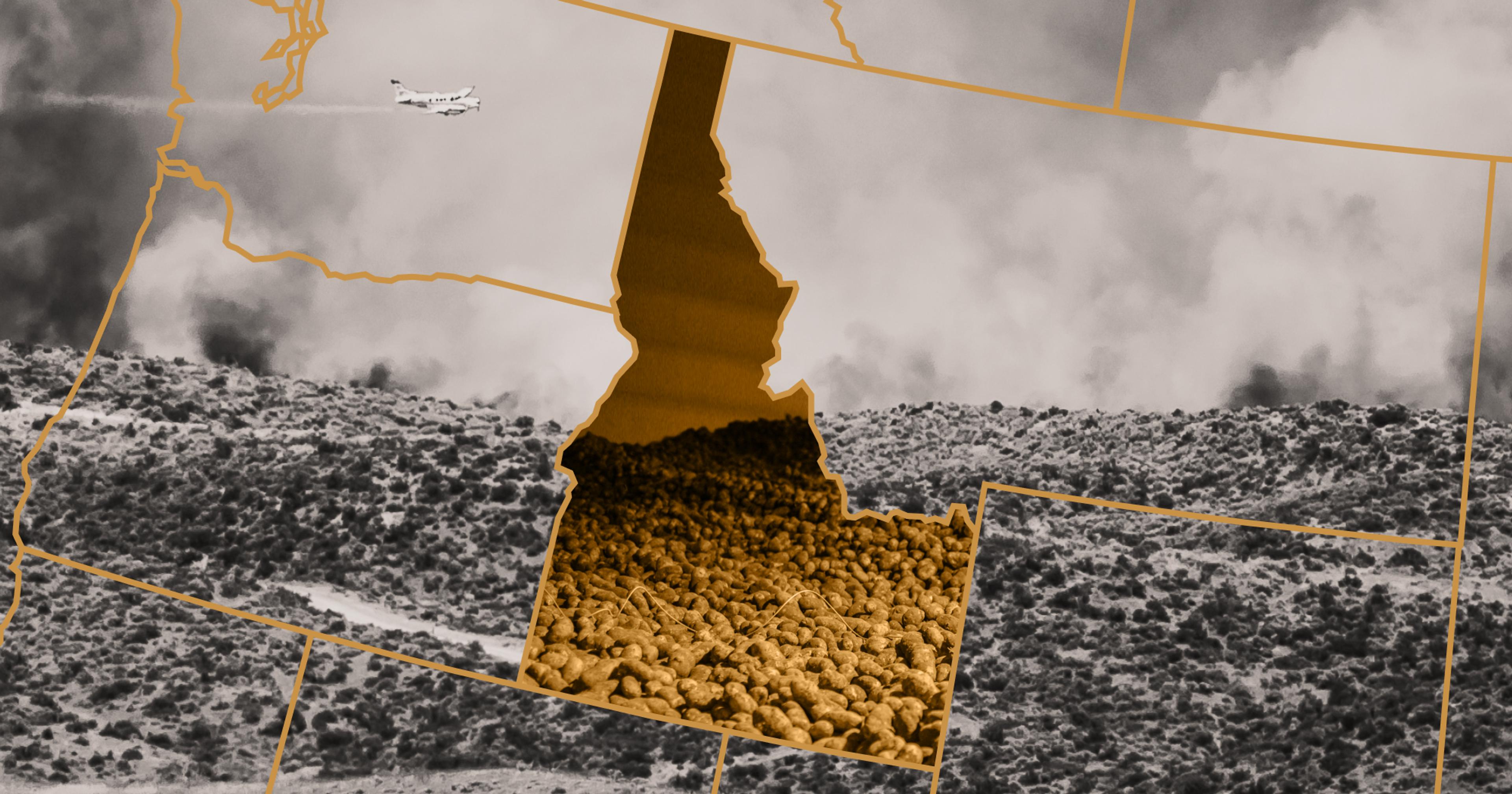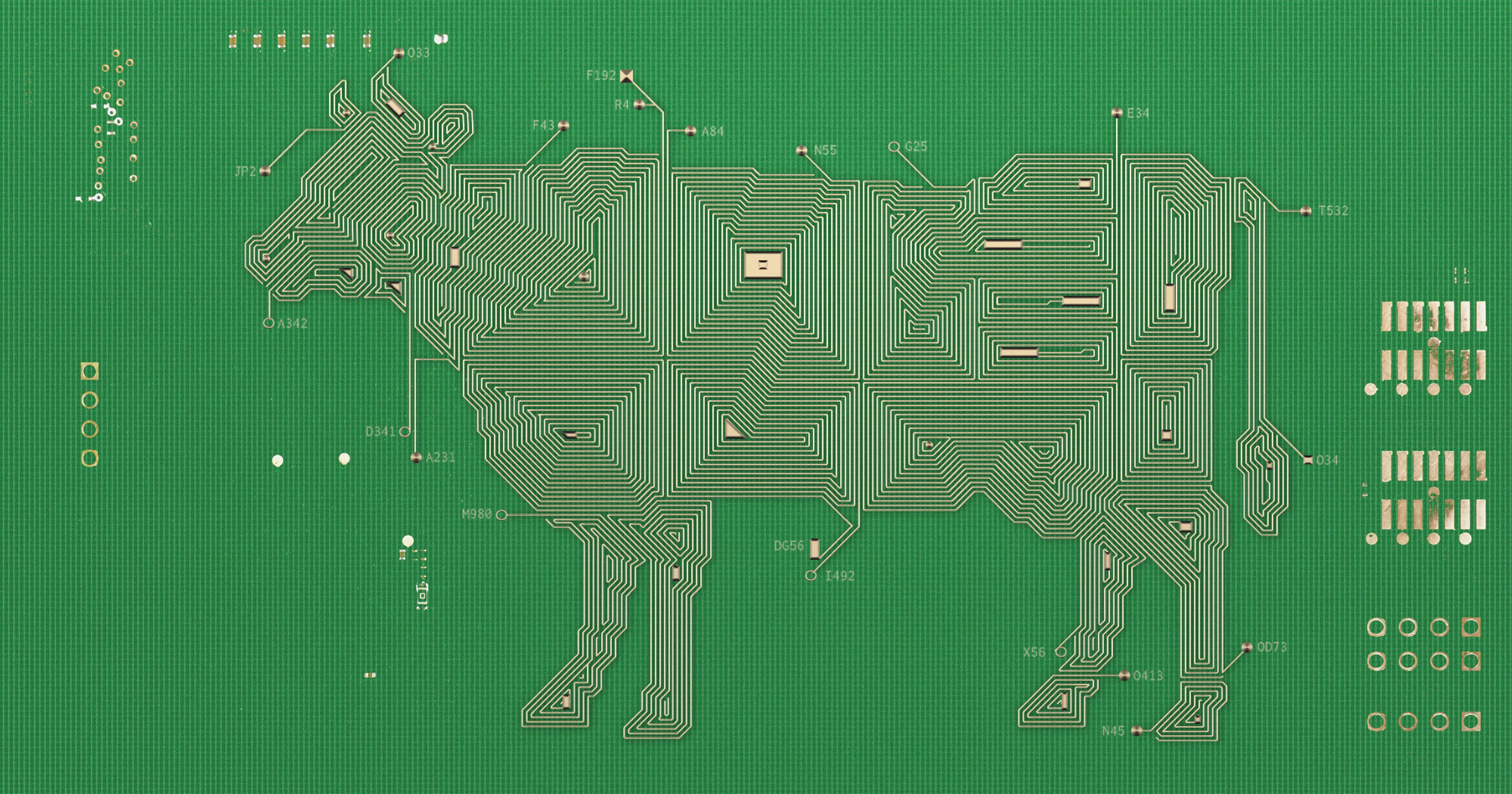New research finds that tuber-based sensors can effectively detect gamma radiation and be planted in fields surrounding nuclear power plants.
In life and in death, potatoes are known for their ability to absorb. When mashed, potatoes become sponges for gravy, and when prodded with metal, they become batteries, acting as a buffer for electricity. Now plant science researchers at the University of Tennessee have exploited yet another thing that potatoes soak up exceptionally well — gamma radiation — to engineer plant-based sensors that could help protect communities from harmful radiation in the event of a nuclear accident.
Co-authors Neal Stewart, a professor in the university’s plant science department, and Robert Sears, then a PhD research assistant, created potato “phytosensors” that glow fluorescent green when exposed to radioactive pollution. If planted in the fields around nuclear energy facilities, they could help signal to first responders and regulators where it is safe for workers and the public.
Before choosing potatoes as their sensors, Stewart and Sears tested the radiotolerance of the plant, observing how four-week-old potatoes responded to a range of gamma radiation doses. Using synthetic biology, the team leveraged the potato’s native DNA damage response (DDR) machinery so that its leaves turn fluorescent when exposed to low-dose ionizing radiation; Sears and Stewart note that the potato’s nuclear genome was ideal because it can be “effectively engineered.” They then tested the sensors using lasers and cameras, demonstrating “full function of the system in a ‘real world’ scenario,” reads the study.
There are a number of reasons potato make sense as sensors: Not only are potatoes happy to grow in a wide range of environments, they’re also less vulnerable to the large-scale disasters that bring mechanical radiation sensors offline or bury them under rubble, as earthquakes and even nuclear accidents like Chernobyl have. While a disaster could damage these sensor potatoes, it likely wouldn’t kill a whole field of them.
“The potato plant is awesome to work with,” said Stewart, who noted that they have wide application for genetic engineering, too. “Also, you can use the potato tubers to asexually reproduce the engineered lines.” Amazingly, potato sensors are self-repairing, self-powering, and wouldn’t need to be replanted every year. Beyond that, they’re cost-effective and don’t require mechanical maintenance. They aren’t, however, perfect: In some climates, winter could kill the aboveground stems, which would then require waiting for new phytosensor stems “to emerge from the tubers belowground as soon as conditions are favorable,” said Sears.
Sears and Stewart also recognize that their bio-engineered potato sensors are slower and less sensitive than mechanical sensors, so mechanical ones would still be needed to direct first responders to the “hottest areas” during a disaster. Afterwards, the potatoes could help regulators determine where it is safe for workers and the public to return.
“The convenient part of using a potato is that it clonally propagates itself through tubers,” said Sears. “You would ideally leave the tubers in the field, where they would continue to grow, produce more tubers, and persist indefinitely.” (However, depending on the USDA’s regulations, they might require the field to be replanted each year so the sensor plants don’t persist in the environment.)
Stewart, a pioneer in phytosensor research, has hoped that more advances in the field of synthetic agricultural biology would translate into the creation of plant sensors that alert farmers to pest or nutrient problems in their field. In 2018, his Advanced Plant Technologies program was awarded 7.5 million dollars from the U.S. Defense Advanced Research Projects Agency, with the goal of modifying potato plants to detect threats like radiation and plant pathogens.
“You would ideally leave the tubers in the field, where they would continue to grow, produce more tubers, and persist indefinitely.”
Thanks to Stewart and Sears’ work, potatoes are the first plant to function as a field-deployable radiation phytosensor. But could scientists turn other plants into gamma radiation sensors? Their study cites the potential of evergreen species, like pines, acting as phytosensors, in part because they wouldn’t die in the winter.
“I mention pines specifically because there is a breadth of information about pine species‘ tolerance of ionizing radiation,” said Sears. “This stems from the environmental research done after the Chernobyl disaster, where there were many pines in the surrounding area. The downfall of our current sensor is that in temperate climates, winter would kill the leaves and stems of potato and annually remove the sensor you are hoping will protect people. Any plant species that can remain alive year-round would work for a given area.” However, the fact that potatoes clonally propagate and are tolerant to so many climates made them the best choice.
Experts expect that the use of nuclear energy will increase in the coming years, as it’s considered a cleaner alternative to fossil fuel energy sources. While modern nuclear energy production is largely considered safe, planting fields of these potato sensors around a power plant could add another layer of pollution detection in the event of an accident. It has only been 13 years since a tsunami caused meltdowns at the Fukishima Daichii nuclear power plant, which killed nearly 20,000 people and destroyed entire towns.
The UT researchers designed the potato sensors with power plant disasters in mind, but Sears is curious about how similar sensors could help us better understand different types of space radiation, “some of which we cannot calibrate our mechanical detection equipment to because they occur so rarely.”
“I wouldn’t mind tweaking the molecular system to see if we could use a plant to detect radon gas.”
In recent years, interest in space radiation has grown for a number of reasons. NASA has invested in radiation-detecting research equipment to better protect crew members on deep space exploration missions, including lofty endeavors like sending the first humans to Mars.
Sears doesn’t know that their current potato-based sensors are most applicable to space, but he wonders if future radiation phytosensors designs in other species could be. “[Radiation phytosensors] can report the radiation ‘stress’ present in space in a more biologically relevant way compared to mechanical sensors,” he said.
Could potatoes be tweaked to sense anything else? It’s possible. “Plant species have a wide range of tolerance, and potato appears to be one of the more tolerant species,” said Stewart. “I wouldn’t mind tweaking the molecular system to see if we could use a plant to detect radon gas.” Radon, a type of radioactive gas that comes naturally from the earth, is the number one cause of lung cancer among non-smokers, according to the EPA.
“I’m a big potato fan — food-wise, anyway,” said Stewart, “so having a potato project ticked a box on my bucket list.”










